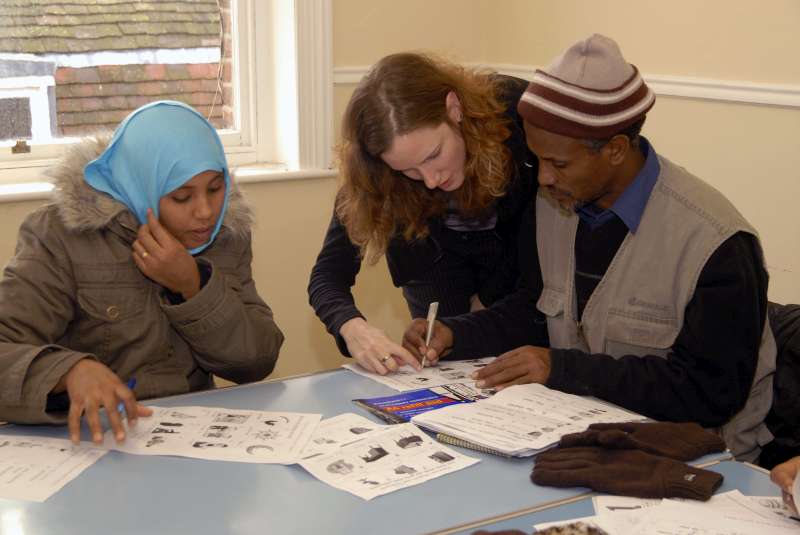Asylum in the UK
What is an asylum seeker?
An asylum seeker is someone who has applied for asylum and is waiting for a decision as to whether or not they are a refugee. In other words, in the UK an asylum seeker is someone who has asked the Government for refugee status and is waiting to hear the outcome of their application.
Does the UK have more asylum seekers than most countries?
No it does not. In the 12 months prior to September 2018, the UK received 27,966 applications from main applicants, 4% more than the previous year. Over the same period, there have been wider falls in asylum applications to other EU countries (down 16%).
The highest number of first-time asylum applicants in the third quarter of 2018 was registered in Germany (with 42 000 first-time applicants, or 29 % of all applicants in the EU Member States), followed by France (27 200, or 19 %), Greece (16 700, or 11 %), Spain (12 700, or 9 %), United Kingdom (9 600, or 7 %) and Italy (9 000, or 6 %). These six Member States together account for 80 % of all first-time applicants in the EU-28. World-wide around 85% of all refugees are hosted in developing countries not in wealthy industrialised countries.
(Source: Home Office, EuroStat)
How many refugees are there in the UK?
According to UNHCR statistics at the end of 2017 there were 121,837 refugees, 40,365 pending asylum cases and 97 stateless persons in the UK.
The vast majority of refugees stay in their region of displacement, and consequently are hosted by developing countries. Turkey now hosts the highest number of refugees with 3.5 million, followed by Pakistan with 1.4 million.
(Source: UNHCR 2017 Global Trends Report)
Where do asylum seekers in the UK come from?
In the year ending September 2018, the largest number of asylum applications came from nationals of: Iran (2,654), followed by Iraq (2,536), Pakistan (2,188), Sudan (1,917), and Albania (1,695).
(Source: Immigration statistics, year ending September 2018)
What is a bogus asylum seeker?
There is no such thing as a bogus asylum seeker or an illegal asylum seeker. As an asylum seeker, a person has entered into a legal process of refugee status determination. Everybody has a right to seek asylum in another country. People who don't qualify for protection as refugees will not receive refugee status and may be deported, but just because someone doesn't receive refugee status doesn't mean they are a bogus asylum seeker.
Let us remember that a bogus asylum-seeker is not equivalent to a criminal; and that an unsuccessful asylum application is not equivalent to a bogus one - Kofi Annan
What benefits do asylum seekers receive in the UK?
The majority of asylum seekers do not have the right to work in the United Kingdom and so must rely on state support.
Housing is provided, but asylum seekers cannot choose where it is, and it is often ‘hard to let’ properties which Council tenants do not want to live in.
Cash support is available, and is currently set at £37.75 per person, per week, which makes it £5.39 a day for food, sanitation and clothing.
(Source: Home Office)
How many refugees have been resettled to the UK?
Resettlement is the transfer of refugees from a country where they have initially sought asylum - often in the same region as their country of origin - to a third state which has agreed to admit them. It is a life-changing durable solution for refugees whose life, liberty, health, or human rights are at risk in their country of refuge, or for whom relocating to another country is their only hope of being reunited with their family.
Refugees can be resettled to the UK via the Gateway Protection Programme and the Mandate Scheme or the Syrian Vulnerable Person's Resettlement Scheme (VPRS).
In the 12 months prior to September 2018, 5,994 people were resettled in the UK, including 4,567 under the VPRS, 663 under the Vulnerable Children Resettlement Scheme, 745 under the Gateway Programme and 19 people under the Mandate Scheme.
Find out more about resettlement here.
(Source: Immigration statistics, year ending September 2018)
What is subsidiary or humanitarian protection?
Subsidiary protection can be given to people who do not meet the 1951 Convention’s legal definition of a refugee but are still in need of international protection.
Across the EU, the Qualification Directive provides subsidiary protection for those facing the following threats if returned to their country: (1) the death penalty or execution; (2) torture, inhuman or degrading treatment or punishment; or (3) threats from an international or internal armed conflict.
The UK uses the legal term humanitarian protection to meet this Directive. Applicants can also be given 'discretionary leave to remain', a form of temporary permission which is unlikely to be more than three years.
Can refugees reunite with their families in the UK?
Yes. In certain circumstances refugees in the UK are permitted to reunite with family members who are living elsewhere.
In the 12 months prior to September 2018, 6,007 Family reunion visas were issued to partners and children of those granted asylum or humanitarian protection in the UK.
However, current rules are restrictive for refugees applying to reunite with family members in the UK. This is due to a narrow definition of who qualifies as a family member, restrictions on refugee children being able to reunite with their parents, and a lack of legal support for refugee family reunion applications.
Find out more about the #FamiliesTogether campaign.

